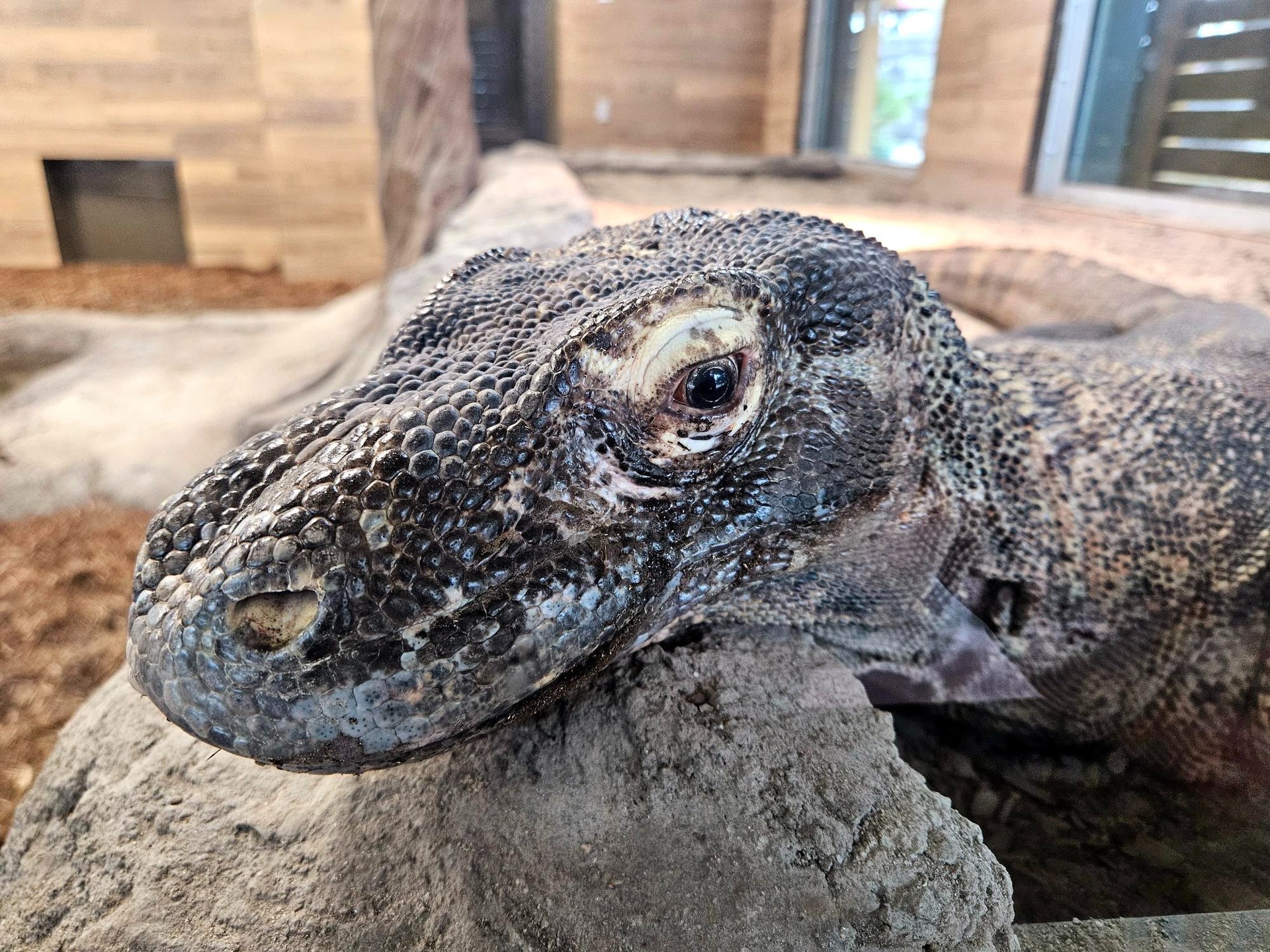- Komodo dragons and their place in Indonesia’s ecosystems.
- Hunting behaviors and dietary habits of Komodo dragons.
- The role of zoos in conservation and education.
- Meet Orochi: a Komodo dragon ambassador at Komodo Crossing!
- The importance of wildlife conservation efforts for Komodo dragons.
Indonesia is renowned for its stunning biodiversity, with its islands home to numerous unique species. Among these is the formidable Komodo dragon, a species that commands attention due to its impressive size and predatory capabilities. Found primarily on the smaller Indonesian islands such as Komodo, Rinca, and Flores, these lizards are a critical component of their ecosystems, acting as both predators and scavengers. These apex predators are not only vital for maintaining ecological balance but also a subject of intrigue for many zoologists.
Komodo dragons exhibit an exceptional ability to hunt various prey, ranging from small mammals to large ungulates. They are equipped with powerful limbs, a strong tail, and a sharp sense of smell, enabling them to track prey from as far as seven kilometers. Unlike many other reptiles, Komodo dragons possess a unique hunting strategy that combines stealth and explosive power. Their attack begins with a sudden sprint, quickly bringing down prey with their serrated teeth. The potent bacteria found in their saliva, once thought to cause blood poisoning, is now understood to be less lethal than previously assumed. Instead, studies suggest that Komodo dragons have venom glands that play a more significant role in subduing prey.
The dietary habits of Komodo dragons are extraordinarily diverse, reflecting their adaptability. While they are adept hunters, these dragons are not above scavenging carrion, often finding opportunities in the leftovers of other predators. This versatility in feeding behavior allows them to thrive in environments where competition for food can be intense. Additionally, the ability to switch between hunting and scavenging underscores their significance in nutrient cycling within their habitats, as they help to decompose organic matter, ultimately benefiting plant growth.
Komodo dragons have a fascinating social structure as well. Solitary by nature, they come together primarily during feeding or mating. Males engage in fierce battles for dominance during the breeding season, showcasing both their physical might and strategic acumen. Females, on the other hand, lay clutches of eggs and take on a solitary guarding role during incubation. After hatching, the young dragons demonstrate a vital survival tactic by heading to trees, where they stay safe from the cannibalistic tendencies of adult Komodos.
The world’s zoos provide an educational platform for millions of visitors, fostering a deeper understanding of animal behavior and the importance of conservation. Zoological institutions have become integral in breeding programs and research initiatives aimed at preserving endangered species. Komodo dragons in captivity serve as ambassadors, raising awareness about their wild counterparts’ conservation needs and ecological roles. Zoos also participate in global efforts to study these reptiles, helping to ensure their survival in the wild through coordinated breeding and habitat protection programs.
At Komodo Crossing!, Orochi stands as a vital representative of his species. This resident Komodo dragon captivates visitors, piquing interest and inspiring many to learn more about these extraordinary creatures. Orochi’s presence provides a unique opportunity for the public to witness the physical features and behaviors that make Komodo dragons fascinating, allowing a personal connection that can drive conservation support. Such engagements highlight the critical role that zoos play in bridging the gap between wildlife and people, fostering an appreciation for, and commitment to, protecting these magnificent reptiles.
Wildlife conservation efforts for Komodo dragons are foundational to ensuring the continued presence of this ancient species in their natural habitat. Threatened by habitat loss, human encroachment, and even climate change, conservation strategies have increasingly focused on habitat protection and sustainable cohabitation practices. National parks and reserves on islands such as Komodo work diligently to maintain healthy populations, ensuring that these ecosystems function naturally.
Initiatives are in place to mitigate human-dragon interactions, which can often result in tragedy for both parties. Conservationists strive to educate local populations and visitors about the importance of safeguarding these reptiles and their environment. This involves promoting responsible tourism practices that do not disturb or degrade the natural habitats of Komodo dragons while allowing for economic benefits to flow to the local communities.
Supporting Komodo dragon conservation is vital for maintaining biodiversity and ecological health in Indonesian ecosystems. These creatures serve not only as emblematic species of Indonesia’s natural heritage but also as indicators of ecological well-being. Ongoing research and conservation programs aim to prolong their existence, ensuring that their role in nature continues to support ecological diversity.
Overall, the conservation of Komodo dragons reflects broader environmental challenges. Protecting these apex predators is not just about saving a species but about maintaining the delicate balance of ecosystems that support a plethora of life forms. Efforts within zoos, like those at Komodo Crossing!, along with in-situ conservation programs, underline the collective responsibility to preserve the natural world for future generations. Through education, research, and active conservation, we can hope for a sustainable future for the Komodo dragons of Indonesia.
*****
Source Description
Would love to boop the nose, but we know better 😉
On the Indonesian islands, Komodo dragons hunt everything from tiny prey to large animals, showing off their serious predator skills. And they’re not picky eaters either, sometimes feasting on carrion—leftovers from other carnivores’ meals.
Dare to meet Orochi, our resident Komodo dragon, at Komodo Crossing!


